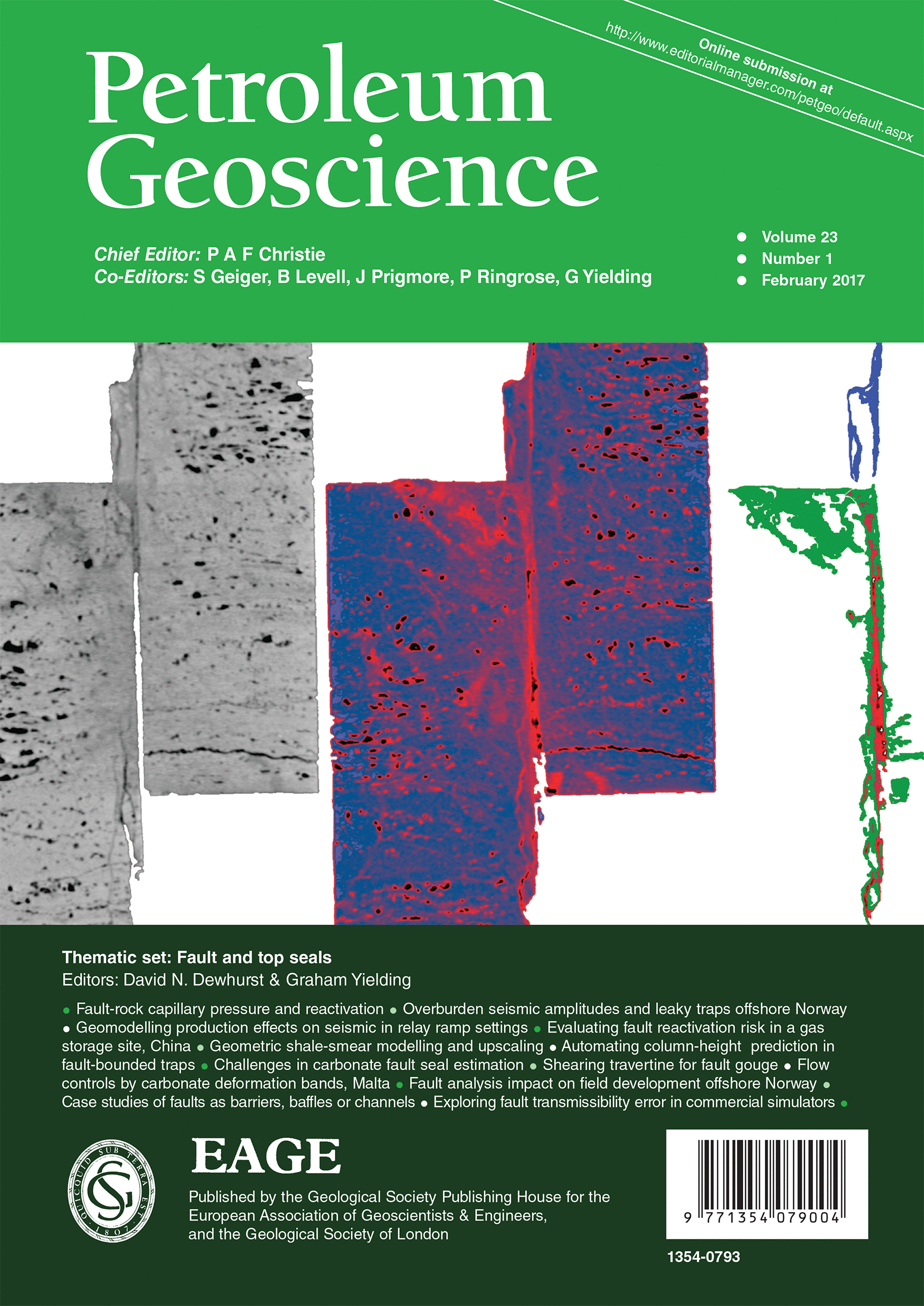
Full text loading...
Predictions of fault reactivation and the hydraulic seal of cap rock are integral parts of the seal integrity research programme of the Banzhongbei gas storage facility (BGS) to ensure the safe storage of natural gas in subsurface reservoirs. We attempt to combine the heterogeneity of geomechanical properties, including frictional coefficient and cohesive strength, into a workflow to estimate fault reactivation risk and the maximum sustainable fluid pressure that will not induce failure of trap-bounding faults and cap rock. Based on the Griffith – Coulomb Failure criterion, fault failure modes – including tensile failure, shear failure and hybrid failure – may occur under conditions of the same in situ stress field as a result of the strength heterogeneity of fault rocks, which plays a key role in the estimation of integrity of the entire fault trap. The juxtaposition of the seal on the BQ Fault with high shale gouge ratio (SGR) values makes a significant contribution to the high fluid pressure build-ups during gas injection, and its low strength properties lead to a higher reactivation risk for the Banqiao (BQ) Fault than for the B816 Fault. The increased pore-fluid pressure adjacent to the BQ Fault induced by gas injection should be lower than 9.7 MPa in order to avoid failure. Furthermore, the maximum sustainable fluid pressure of the cap rock is approximately 13.9 MPa at the locations of the injection wells.

Article metrics loading...

Full text loading...
References


Data & Media loading...

